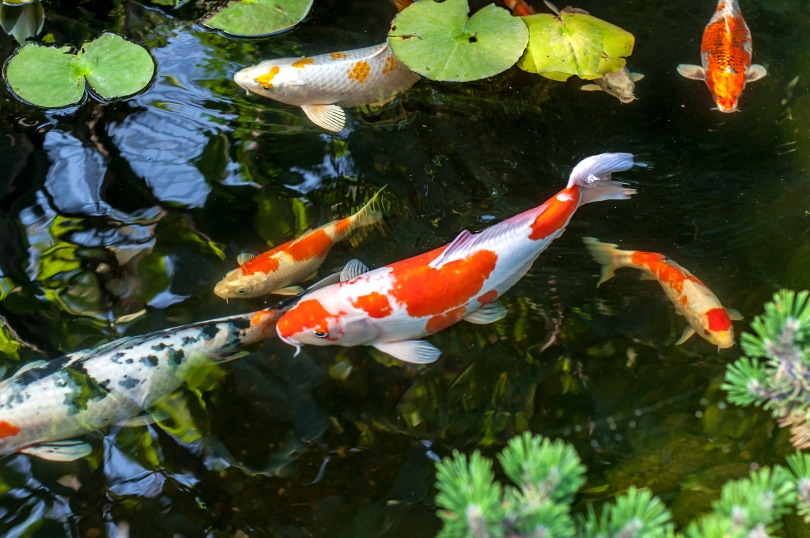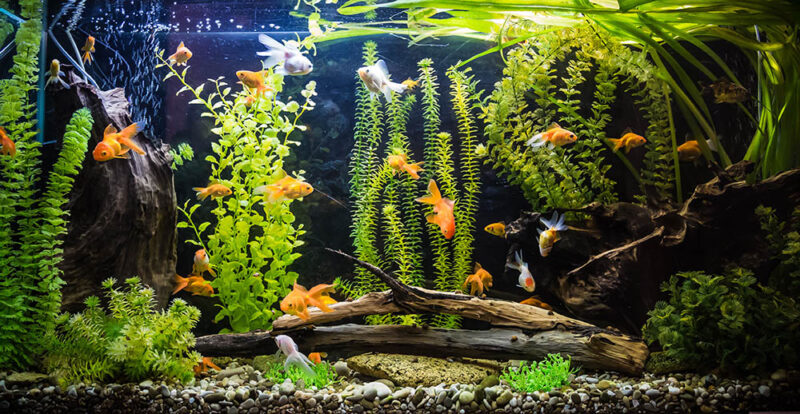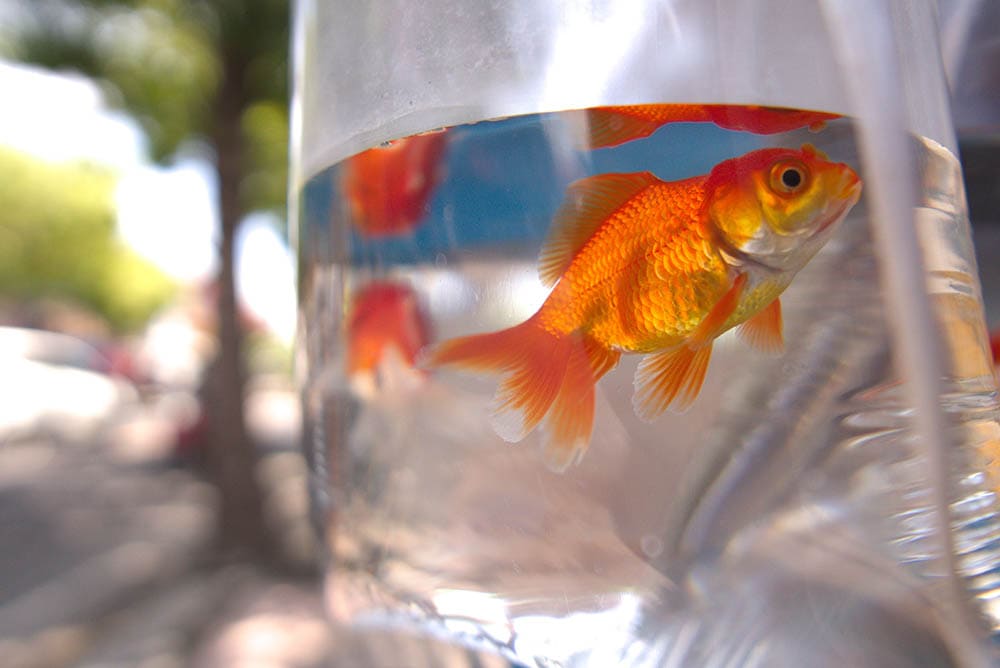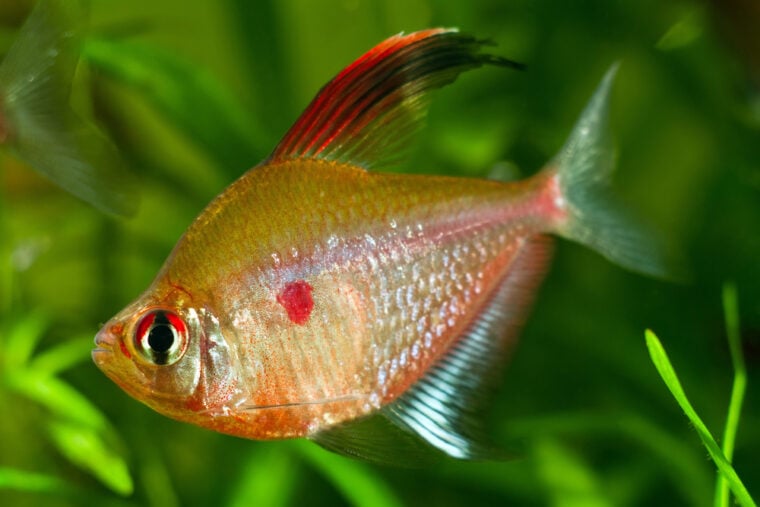
Click to Skip Ahead
There’s no shortage of tetra fish species, with over 150 species across the world. In general, tetras are very small fish, with a few exceptions. One exception you’ll spot in the aquarium trade is the bleeding heart tetra, although this is still a small fish in the grand scheme of things. Also known as the red-tipped tetra and the punto rojo tetra, the bleeding heart tetra is a low-maintenance fish that can make a beautiful focal point in your tank.
| Size: | 2–3 inches long |
| Lifespan: | Up to 5 years |
| Similar Breeds: | Lemon tetra, black phantom tetra, rosy tetra, serpae tetra |
| Suitable for: | Beginner fishkeepers |
| Temperament: | Peaceful, active, social |
If you’re in the market for one of the larger tetra species that will bring activity and interest to your tank, then the bleeding heart tetra is a great option. This beginner-friendly fish is not only hardy but also social and peaceful. Like all tetras, this is a shoaling fish, so a group of six or more fish is essential to the most activity, happiest fish, and most peaceful temperaments.
Bleeding Heart Tetra Characteristics
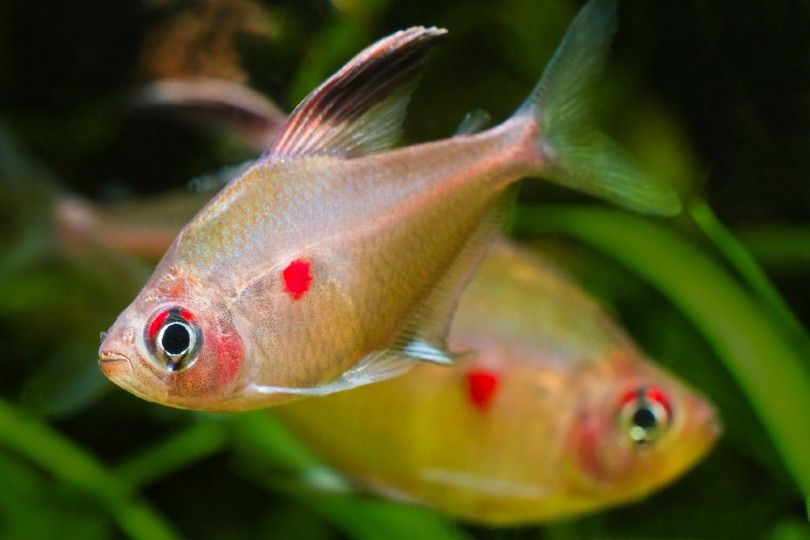
Bleeding Heart Tetra Cost
The bleeding heart tetra is native to the upper Amazon Basin, inhabiting a large number of streams, tributaries, and lakes. They are not a species of concern at this time, and due to their hardiness and peaceful temperament, they’re frequently sold in pet stores, fish stores, and through online vendors.
You can expect to spend anywhere from $4–$8 for a single bleeding heart tetra. Since these are shoaling fish, you will need to budget for a group of fish. Six is the absolute minimum number of fish you should aim for, but 10 or more is ideal. Many sellers offer discounts if you purchase a shoal of fish together as opposed to making separate purchases.
Sociability of the Bleeding Heart Tetra
Do These Fish Make Good Pets?
Yes, bleeding heart tetras make excellent aquatic pets. They are active fish that always seem to be moving. They are interesting to watch and easy to care for, making them ideal pets.
Does This Fish Make a Good Tank Mate?
Yes! These are peaceful fish that are an excellent addition to tropical community tanks. It’s important to keep them in shoals, though. When bleeding heart tetras are kept alone or in very small groups, they may become timid and fearful, or they may become aggressive and nippy. As with all tetras, keeping them in a group is a necessary aspect of maintaining the health of your fish and your whole tank.
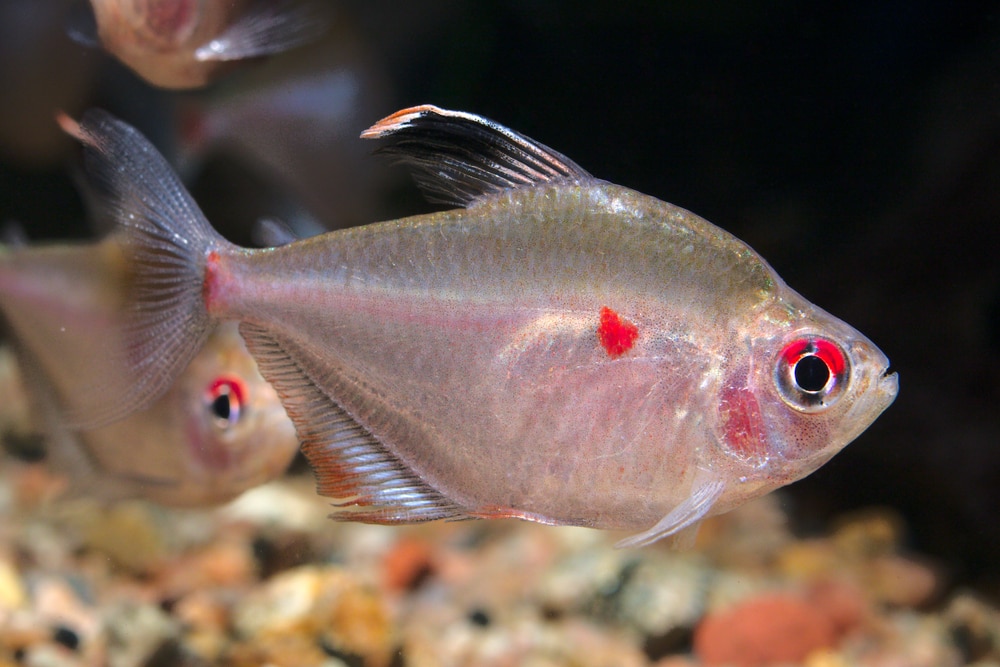
Care Guide & Tank Set Up
Water Quality, pH & Temperature
This is a truly tropical fish, so a freshwater environment that is kept between 72–80°F is important, with the ideal temperature running around 75°F. They prefer slightly acidic water with a pH between 6.0–6.5. They can tolerate lower pH levels when kept in a blackwater tank environment, but for the health of your fish and tank, it’s best to aim for excellent water quality instead of chasing a pH level.
Substrate
Although they are likely to spend a lot of time in the middle of the water column, bleeding heart tetras are also known to spend time scavenging from the bottom. A sandy or fine gravel substrate is best for them. If you choose to use aquarium soil, it should be capped with sand or gravel to prevent messes when your fish scavenge.
Plants
The bleeding heart tetra prefers a densely planted environment, and you will need plants that can thrive in warm water with an acidic pH level. Some plants to consider include Amazon swords, Java moss, Java fern, Anubias, Cryptocoryne, Hygrophila, Tiger lotus, Amazon frogbit, and Salvinia.
Lighting
Since they are native to densely planted waters with plenty of tannins from driftwood and plant matter, bleeding heart tetras don’t appreciate bright lighting. Your light should be adequate to support the plant life in your tank, but floating plants and tall plants, as well as tannin-rich items, can help to dim the light before it reaches your fish.
Filtration
The bleeding heart tetra is native to waters that have movement, so they will be happy to have a tank with some current. This current can be the current provided by a hang-on-back or canister filter, but internal filters and small powerheads can increase water flow as well.

Things to Know When Owning a Bleeding Heart Tetra:
Food & Diet Requirements
These fish are true omnivores, eating everything from plant matter to small crustaceans and insects in the wild. Provide your bleeding heart tetras with a high-quality diet that is made for tetras or community tanks. You can also offer treats, like bloodworms, mosquito larvae, brine shrimp, romaine lettuce, zucchini, and cucumber.
Size & Growth Rate
Although large for tetras, the bleeding heart tetra only reaches up to 3 inches in length, although they have been found upwards of 3.5 inches in the wild. Like many tetra species, they grow rapidly, so you can expect your bleeding hearts to reach their full adult size within just a few months.
Appearance
Named for the red spot on the sides of its chest, the bleeding heart tetra also has a blush color on its cheeks, near the base of the tail, and around the upper portion of its eyes. It has medium-length fins with white and black markings, with some fish developing long, flowing fins.
Lifespan and Health Conditions
With proper care, bleeding hearts can exceed 5 years of age, with some living beyond 10 years. Maintaining excellent water quality, keeping them in groups, and feeding an appropriate, high-quality diet will provide your bleeding hearts with the best shot at a long life.
They are generally healthy fish, not showing a propensity for any particular diseases or conditions. They are at risk for most common aquarium diseases, though, including ich, fin rot, and parasitic infections.
Male vs Female
While they are similar in appearance, there are some notable differences between male and female bleeding heart tetras. Females tend to be slightly larger than males, and they often have a more round, full body shape, while males tend to be leaner since they lack eggs. Males have larger, longer dorsal and anal fins, and the dorsal fin takes on a sickle shape as it lengthens. Females’ fins tend to be shorter and more rounded.
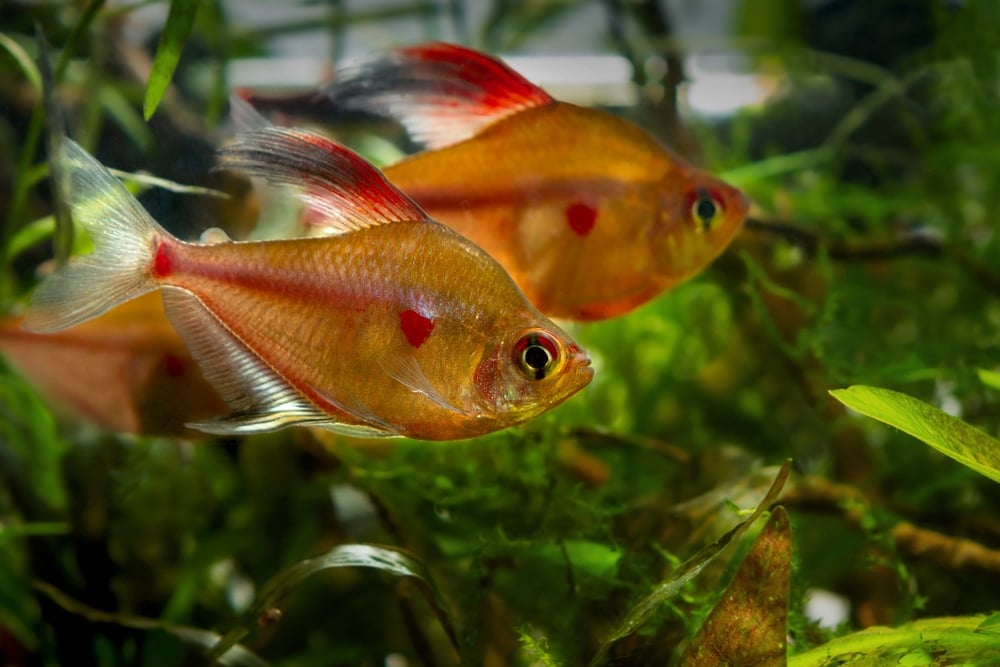
3 Little-Known Facts About Bleeding Heart Tetras
1. They Get Their Name From the Red Dot on Their “Heart”
2. They Are Most Commonly Found in South America
3. You Usually Find Them Near Vegetation, Roots, Dry Leaves, and Driftwood
Final Thoughts
The bleeding heart tetra is an excellent beginner fish that makes a great addition to community tanks. It prefers slightly acidic water and can do well in some blackwater environments. This is a peaceful fish when kept in shoals of appropriate sizes.
When kept in small groups, fish may become stressed, shy, fearful, defensive, or overtly aggressive. This is a hardy fish that can do well in moderate water quality, but with proper care and high water quality, the bleeding heart tetra can exceed a lifespan of 5–10 years. Notable for its red chest patches that give it the appearance of having a bleeding heart, this beautiful fish is lively and will bring color and activity to your tank.
Featured Image Credit: Aleron Val, Shutterstock



